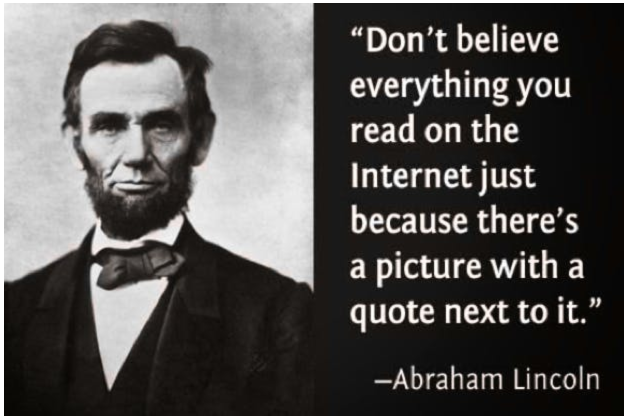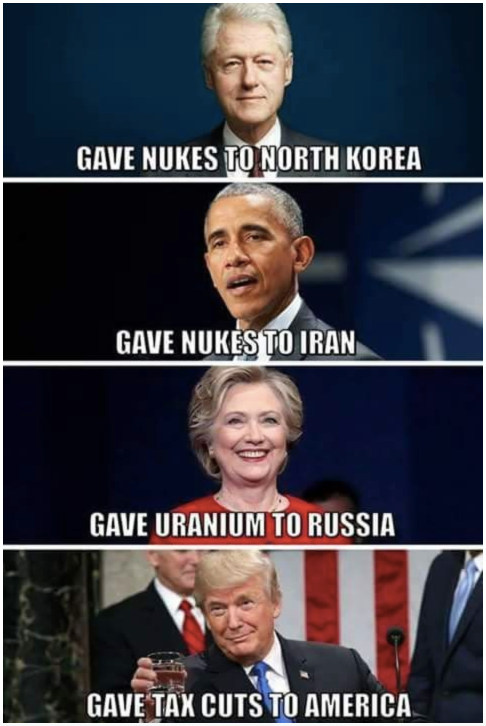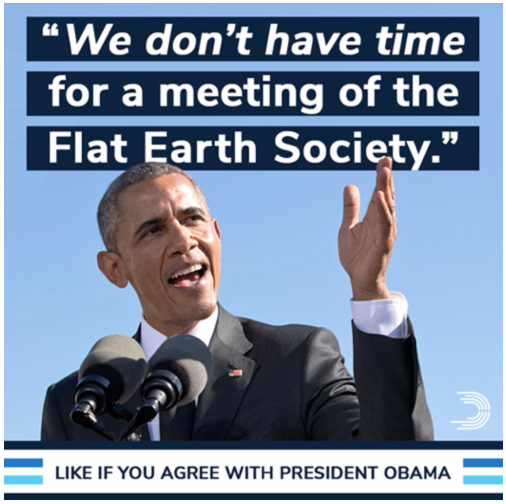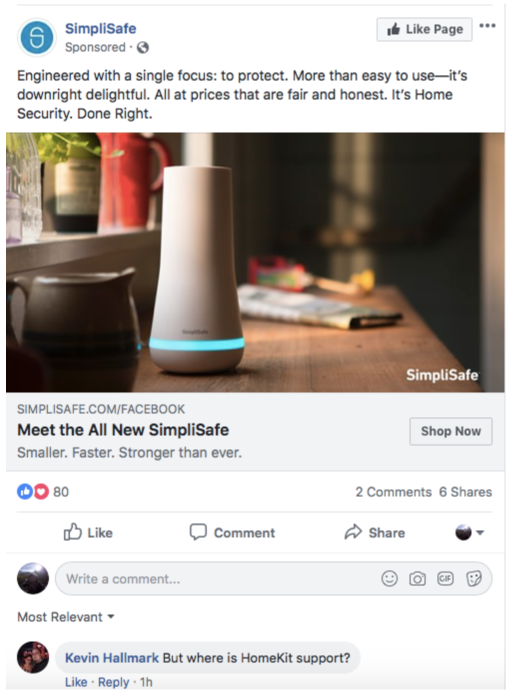You ever wonder why memes seemingly came out of nowhere…
And are so popular that we can’t imagine a time without them?
They seemingly just came into existence and now, most of the online “world” couldn’t exist without them.
While we’d all like to believe a meme does nothing more than give you a quick chuckle, a passing smile as you scroll through your feed…
The true story of the psychological and behavioral influence of memes plays out like a cross between a spy film and The Matrix (complete with propaganda and Russians).
Over the course of our journey, we’ll see:
- How memes are, in reality, the new leaflets of propaganda psyops (except way more effective).
- The connection between a Department of Defense agency that creates robots (that will likely eventually police humanity) and how memes control us.
- How the Back to the Future movies may have seen all this coming.
- Oh, and how it can all help you sell better :)
Let’s get creepy.
Meme Warfare (It’s a Real Thing)
To most of the world, a meme is “an amusing or interesting item (such as a captioned picture or video) or genre of items that are spread widely online especially through social media.”
In fact, that is one of the Webster’s definitions. That said, it’s not the primary definition.
Meme: an idea, behavior, style, or usage that spreads from person to person within a culture.
Now, let’s take a look at a screenshot for another word — Propaganda.

The memes that make you laugh, cry or even the ones that motivate you to take social and political action?
Could. Be. Lies.

People scrolling along their Facebook are doing it for a reason.
They want to be moved. No, they don’t want to catch up with family (by and large).
And no, most don’t want to buy products that just show up when they didn’t ask them too (more on that later).
We want to emote. Some want to laugh hysterically with the blinking guy meme (or whatever the joke of the day happens to be).
Others want to seeth hatred towards a particular social issue or candidate.
More still just want to be made happy and feel like things are ok.
Social media is a drug for many and they want it to make them feel certain ways.
Wait, wait, wait a minute…
You mean that “I can haz cheezburger” or that little fist pump toddler are a form of espionage? Maybe, but not really.
However, if it’s all you do, it’s definitely a blue pill keeping you in ignorance to what’s influencing you.
The meme was first a tool before it was a social norm. Let me explain with this brief (incomplete) timeline.
- 1976: Richard Dawkins coins the term “meme” as a description of how one “unit of culture” jumps from one person to another.
- 1983-1985: Douglas Hofstadter does research and writes about “memetics” or the study of meme influence in culture (yea, the 70’s and 80’s).
- 1995-1996: Memes began to be compared to a virus by Microsoft executives and others.
- 2006: The connection was made between the potential power to influence social psychodynamics in a paper linking memes and warfare.
- 2011: Dr. Robert Finkelstein proposed a new division of the Army, called “Meme Control Center”.
Here’s what it means.
Back in 2006, when Facebook was just introducing its “news feed” feature.
Big government-level thinkers were talking about using memes as a way to shift the culture as a war tactic.
The research that led to the call for the Meme Control Center was done at DARPA, which has recently become more well-known due to the robotic research.
So, How are Memes Weaponized?
Warning: We’re about to go into political territory. It’s perhaps the best example of how these are used by political organizations and governments.
Here’s how memes are used to persuade a culture.
Step 1: Selective And Vague But Powerful
Take a look at this image:

What on this image is absolutely true? Technically nothing.
Some of you may have said the tax cuts, right?
There was a decent-sized changed to the tax laws and the President was a big part of that.
It’s far-fetched to think that any of the others pictured actually handed over the harmful items claimed.
This is a viral meme and there are possibly thousands more like it representing every party, social idea or gripe imaginable.
However, there are reasons for every word on the image.
By leaving out key details, emotions are high and knowledge is low. This atmosphere creates a perfect storm to rile up an audience. There were tax cuts and most laypeople know that. Well, if that 25% is true what if the rest is too!
Oh my, you mean the Democrats actually…no. Rage intensifies.
Again: This could easily be done for the other side. It’s just that Democrats aren’t as up to speed on the tactic as the Republican party. In fact, complex buyer behavior and things like memetics helped Trump win the Presidency.
Here’s an example to show what I mean.

(Source)
This was an apparent quote from President Obama about the U.S. pulling out of the Paris Climate Agreement.
Unfortunately, the joke (ahem) falls flat.
It does work on their base. Statistically speaking Democrats are higher educated and these types of jokes are great for those who “get them”.
Step 2: The Right Details
These memes don’t stay vague forever.
There are the comment sections on social platforms and the individual pages that put up the memes.
This is where the details come out.
In the comments, it could be a fight with the upper hand belonging to the one who posted.
Say a person says, “He did not give them nuclear weapons! That’s ridiculous.”
The poster responds, “He gave them billions of dollars! And they were continuing their research and everyone knew it!”
Ah, the details came out and someone who disagrees was put to shame.
It’s important to note what’s not happening here. An actual discussion with an audience that is bent on finding out the whole truth.
If that were happening, it could end up in a discussion about the details, but in a way that actually makes both sides seem, well, not like they seem.
Once a person has a few key details that seem to match the initial bold, yet vague statements — they are more bought into the scenario.
Step 3: The Right Spin
You’ve got the emotions high, the details are in play. Now, it’s time to spin those details in the right direction and lock in that person into your camp.
So, billions of dollars are given to countries from the U.S.A. every year. Some of which aren’t so friendly.
Presidents past have given aid to countries that have agreed to stop producing or testing nuclear weapons — and those countries may or may not have complied.
There are so many questions that go from policies to congressional actions, all the way down the line to who you should vote for.
But *most* of the time, meme warriors don’t want to answer questions — they want to ask you some.
Take our details.
The meme takes you to a website article and it gives the whole billions of dollars explanation and then there is one key line of copy:
“He gave $3 billion dollars to the regime and what do you think they did with it?”
You hear that spin?
With some clever positioning and the right amount of facts, a thought is then inserted into the minds of those who are “looking into” an issue.
Logically, it may make sense.
But take this into account:
- Where the money is going exactly is still not known by our fictitious person.
- In most cases, the money wasn’t directly sent to a foreign government.
- These facts won’t get discussed in a meme warfare environment.
Yep. It happens every day to democrats, republicans and even independents who think they aren’t part of the two-party system.
Day after day, week after week people are being slowly guided by institutions and even governments they trust.
Ideology, values, and desires are weaponized to bring people onto a side they may not be on if things were explained clearly.
And it gets creepier still.
Back to the Future and Smart Memes
As marketers and copywriters, we get excited about new tools. Predictive analytics. Gasp. Machine learning and AI. Woohoo!
To us, they’re just arriving or on the horizon.
But the same entities who have been considering memes a tool for changing society — they’re living in the future.
Marty McFly is in the year 2015 and walks into an 80’s style cafe. He’s not greeted by a human, but a television with none other than Ronald Reagan. He sees Michael Jackson too.
The Back to the Future movies have a way of predicting the future with some shocking accuracy at times.
But this scene in particular. A President who obviously didn’t say the words, but looks like he did. Take a look at this video filled with, what looks like, President Obama speaking. Well, it’s fake (at least part of it).
I think I speak for everyone when I say hopefully… Hopefully, people will not be fooled by fake videos. However, truth nowadays seems stranger than fiction in a lot of ways.
Incredibly Important Note
Memetics typically has a few target groups and goals. The memes are meant to;
- Draw in those on the fringe (e.g. moderate Republicans who aren’t 100% for Trump).
- Stir up the base to be advocates for the cause at hand.
- Drive away all those who were never going to be supportive.
To put it in the negative, memetics are not typically used to win over those who are on the opposite side of a cultural issue.
Fence sitters and fanatics are usually the prey for these types of tactics.
Memetics + Marketing = Incredible Results
At the core, this is about the future of information warfare.
And here’s one thing that struck me about the correlation between what is happening in the world of political espionage and the business world.
Both Marketing and Information Warfare are about influence over a period of time.
In marketing, you have different stages. In its simplest form, a buying cycle is awareness, consideration, purchase.
Remember the three steps to an effective memetics campaign? They are strikingly similar, aren’t they?
I’ll leave you with a few thoughts about ethically using memes to influence the behavior of your target audiences.
It’s a bit harder for marketing purposes, but we can still use the same steps.
Step 1: Vague But Powerful – And Appealing
Ads can be vague by nature. It’s a short ad, a quick image or what have you. This is what makes memetics so perfect.
It’s a cultural form of communication that people are drawn – and that you can utilize to influence their emotions in a powerful way.
First, a bad example.

Boooorrrriiinnnggg.
For the record, this is not memetics. Just bad marketing. And it’s rampant. Again, memetics is about using culturally popular images and behaviors that influence the lifestyle of people. Using these to influence starts by them being popular.
Here’s an example from Jimmy John’s.

This meme fits both definitions of the word. Follow me for a second here.
- It’s a joke that a current segment of society is aware of in a form that is currently influencing culture, making it a meme in the first sense of the word.
- It’s also a meme, an actual image with text to be funny.
Important: Using memes (like the funny pictures with words) is not necessarily memetic marketing. The important thing is to use a medium or format that is currently influencing and appealing to society, especially the subset of society your targeting.
Step 2: The Right Details – And Resources
One of the most common complaints in marketing, from both sales reps and consumers, is the lack of self-research materials available.
If you think the equation is to pay for an ad straight to a sales page…you’re in the wrong era.
Awareness. Consideration. Purchase.
Those who’ve felt an emotion about your memetic marketing and are interested in a solution will search for details.
If you don’t guide them through this process, they’ll look elsewhere. Review sites and competitors could actually benefit from your memes.
Much like our political example, information has to be available immediately.
Create the resources that flow from the initial marketing and send it out to the same audience, especially those who’ve interacted with your marketing (e.g. liking your Facebook ad).
Step 3: The Right Spin – And Call-to-Action
You’ve made the fence sitters warm to your product through emotion. Maybe you’ve highlighted a pain through a funny image.
Next, you’ve provided the details that prove the pain can be solved.
Now it’s time to ask your question and put the right spin on this whole memetics journey. Essentially, you want to ask, “What if that pain could all go away?”
Use Memetics, but Do It Responsibly
Memetics have moved elections, shifted cultural norms and excited a base to action against certain issues.
There’s a reason subliminal messaging is illegal in some countries.
Behavioral economics, predictive analytics, and using memes will be used for both harmless and nefarious causes for years to come.
But I’ll leave you with a quote.
“A copywriter should have an understanding of people, an insight into them, a sympathy toward them.” — George Gribbin